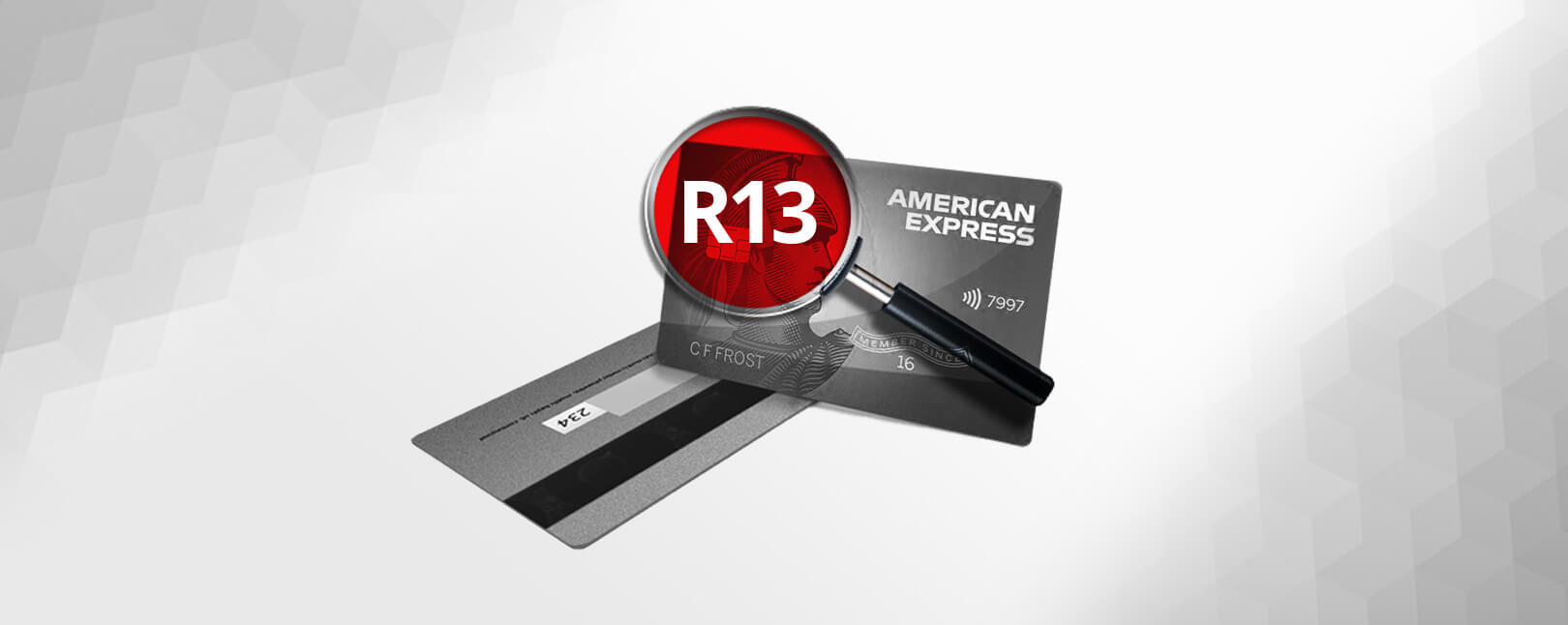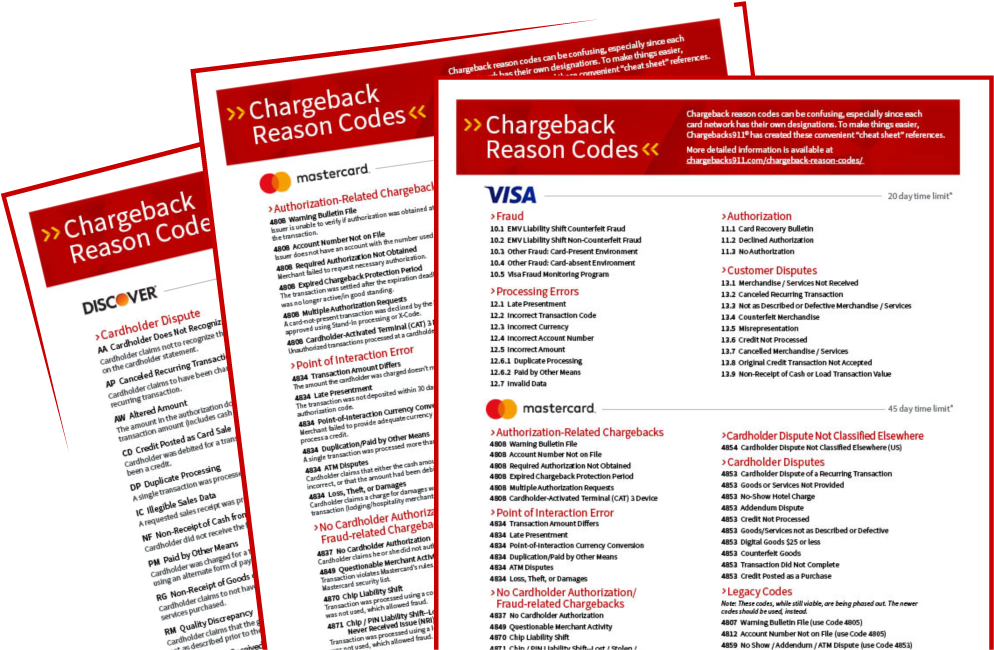
How to Handle Amex Reason Code R13 Chargebacks
American Express breaks down the acceptable causes for a customer to dispute a credit card transaction in their dispute guidelines. This is done for the sake of simplicity and standardization.
Each chargeback trigger has a designated “reason code.” Amex can then assign the appropriate code to each case to show the given reason for the chargeback.
Learn more about Amex reason codes
Today, we’re looking at one reason code in particular — R13 — and exploring the causes, timeframes, fees, and other specifics. We’ll also explore what you can do to prevent these chargebacks from happening.
Recommended reading
- Best Credit Card Processing Companies of 2025 REVEALED
- Chargeback Stats: All the Key Dispute Data Points for 2025
- What Happens When You Dispute a Transaction?
- How EMV Chip Cards Work: Pros, Cons, Data Points & More
- The AI Gap: Banks’ Slow Adoption Creates Chances for Fraud
- How Clean Fraud Works: Tactics, Red Flags & How to Prevent
What is American Express Reason Code R13?
American Express chargeback reason code R13 is “No Reply.” This reason code is used to explain that the cardholder at least tried to make a good faith effort to resolve the issue with the merchant. But, the cardholder didn’t get a response within the specified timeframe.
This code is typically used for non-fraudulent disputes, such as product or service issues. For example, let’s say you received a customer inquiry or complaint, but you failed respond in a timely manner. Or, maybe you did submit a reply, but it was after the due date for a response. Either of these could result in a reason code R13 chargeback.
What Caused This Dispute?
Amex Chargeback Reason Code R13 is issued when a customer (or their bank) has a question about a transaction, or simply wants to get more information from you. But, you failed to respond as requested.
There are three basic scenarios in which you might get hit with a reason code R13 chargeback:

How to Respond to Amex Reason Code R13 Chargebacks
So, what should you do if you have proof that the reason code is invalid?
If you believe the chargeback was filed by mistake, you should initiate a dispute response through a process called representment. Representment involves challenging the chargeback by presenting compelling evidence to the card issuer (American Express, in this case) to demonstrate that the transaction was legitimate and adhered to their policies.
This evidence can include a wide range of documents. But, it's crucial to remember that there is a strict deadline for this process.
You have just 20 days to submit your response to American Express. This period includes the time your acquirer takes to notify you of the dispute and the time they spend reviewing and submitting your case. Realistically, you will often have five days or less to prepare and send your response.
Acceptable Evidence for Amex Reason Code R13 Responses
You can re-represent these charges under the condition that you have compelling evidence.
For American Express reason code R13 chargebacks, you’ll need to provide “Proof you responded to the original inquiry within the specified time frame.” Examples of acceptable documentation include:
- Email or letter correspondence with the customer proving a response was sent within the required timeframe.
- Proof of delivery for any physical mail that may have been sent, such as certified mail receipts or courier tracking information.
- Screenshots or copies of online form submissions showing that you responded to the inquiry within the specified time frame.
- Customer service logs or call recordings showing attempts to resolve the issue with the customer
Alternatively, you might have already issued a credit to the buyer as a way of trying to avoid the dispute. In this case, you’ll need to offer proof that you already provided a credit to offset the amount charged.
The success of representment depends on the thoroughness and relevance of the evidence provided. Maintaining detailed records of transactions and communications with customers is vital to effectively counteract all chargebacks, including those under reason code R13.
How to Prevent Amex Reason Code R13 Chargebacks
As the old adage goes, “an ounce of prevention is worth a pound of cure.”
You may never be able to stop chargebacks entirely. But, you can limit your exposure to risk and keep your chargeback ratio in good standing by adopting a few best practices. Generally speaking, you’ll want to:
#1 | Respond Promptly
Let’s hit this one right up front. You should put procedures in place to make sure you always respond to inquiry notifications by the reply due date. Ensure you’re checking system messages, and have processes in place to make sure action is taken right away when you get a new inquiry.
#2 | Don’t Delay When Issuing Credits
If you receive an inquiry, and agree that a credit is due to cardholder, make sure you provide that credit as quickly as possible. Also, be sure to transmit a notification to Amex, letting them know that you’ve already credited the buyer.
#3 | Keep Good Records
Keep accurate and thorough records of all transactions and communications with customers. This will help you provide comprehensive evidence, but it can also help you expedite the response process, reducing the risk that you’ll run out of time for your response.
Take a Wider View
You can dispute invalid chargebacks from Amex reason code R13. However, it’s much more efficient to take a proactive stance. The same is true of the other chargeback reason codes, as well. A truly effective chargeback management strategy must encompass prevention as well as disputing cases of friendly fraud.
Chargebacks911® can help your business manage all aspects of chargeback reason codes, with proprietary technologies and experience-based expertise. Contact us today for a free ROI analysis to learn how much more you could save.
FAQs
Does Amex investigate chargebacks?
Yes. American Express investigates chargebacks by reviewing the evidence provided by both the merchant and the cardholder to determine the legitimacy of the transaction and decide on the chargeback claim. This process ensures a fair resolution based on the documentation and arguments presented by both parties.
What is the reason code for a chargeback on American Express card?
An American Express chargeback reason code is a code that identifies the specific reason a cardholder or issuing bank has disputed a transaction, guiding the merchant on the nature of the dispute and what evidence may be required to contest it. Each code corresponds to a particular issue, such as unauthorized use, processing errors, or non-receipt of goods or services. Click here to see a full list of Amex reason codes.
Do police investigate chargebacks?
Police typically do not investigate chargebacks as they are considered a dispute between the merchant and the cardholder, handled through the card issuer's internal processes. However, if fraud is suspected as the cause of a chargeback, law enforcement may be involved in investigating the fraudulent activities.
How successful are Amex disputes?
The success of an American Express dispute depends on the merchant's ability to provide compelling evidence that the transaction was valid and in accordance with Amex policies. Success rates vary widely based on the nature of the dispute and the quality of the documentation provided by the merchant.
How does American Express investigate disputes?
American Express investigates disputes by reviewing documentation and evidence provided by both the cardholder and the merchant, such as transaction receipts, proof of delivery, or communication records, to determine the validity of the chargeback claim. This process aims to ensure a fair resolution based on the facts presented by both parties.









